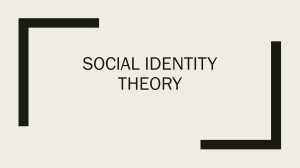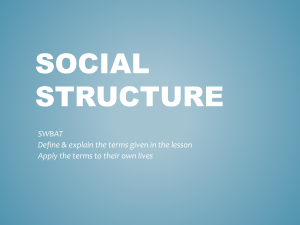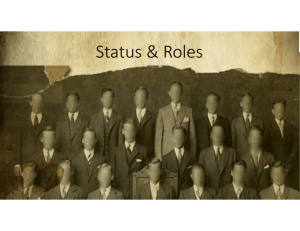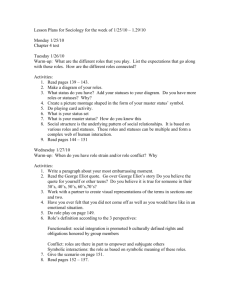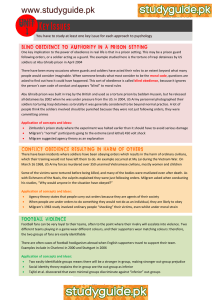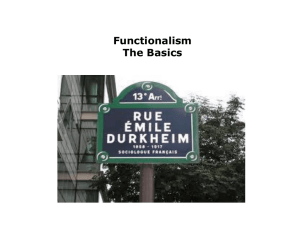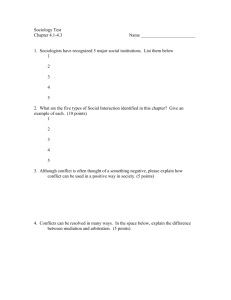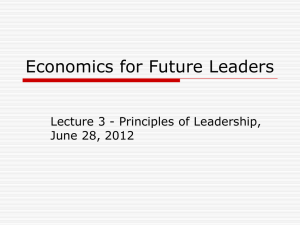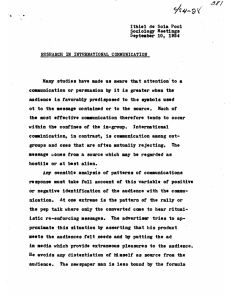Sociology Chapter #3 Review Directions: Use your notes & a book
advertisement
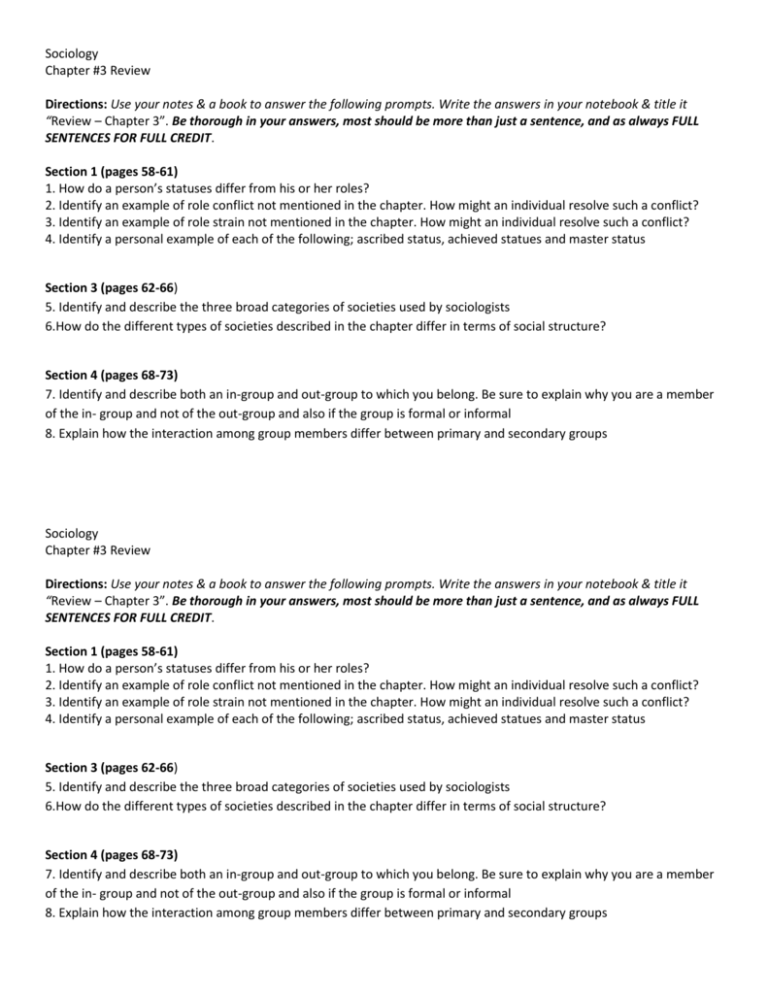
Sociology Chapter #3 Review Directions: Use your notes & a book to answer the following prompts. Write the answers in your notebook & title it “Review – Chapter 3”. Be thorough in your answers, most should be more than just a sentence, and as always FULL SENTENCES FOR FULL CREDIT. Section 1 (pages 58-61) 1. How do a person’s statuses differ from his or her roles? 2. Identify an example of role conflict not mentioned in the chapter. How might an individual resolve such a conflict? 3. Identify an example of role strain not mentioned in the chapter. How might an individual resolve such a conflict? 4. Identify a personal example of each of the following; ascribed status, achieved statues and master status Section 3 (pages 62-66) 5. Identify and describe the three broad categories of societies used by sociologists 6.How do the different types of societies described in the chapter differ in terms of social structure? Section 4 (pages 68-73) 7. Identify and describe both an in-group and out-group to which you belong. Be sure to explain why you are a member of the in- group and not of the out-group and also if the group is formal or informal 8. Explain how the interaction among group members differ between primary and secondary groups Sociology Chapter #3 Review Directions: Use your notes & a book to answer the following prompts. Write the answers in your notebook & title it “Review – Chapter 3”. Be thorough in your answers, most should be more than just a sentence, and as always FULL SENTENCES FOR FULL CREDIT. Section 1 (pages 58-61) 1. How do a person’s statuses differ from his or her roles? 2. Identify an example of role conflict not mentioned in the chapter. How might an individual resolve such a conflict? 3. Identify an example of role strain not mentioned in the chapter. How might an individual resolve such a conflict? 4. Identify a personal example of each of the following; ascribed status, achieved statues and master status Section 3 (pages 62-66) 5. Identify and describe the three broad categories of societies used by sociologists 6.How do the different types of societies described in the chapter differ in terms of social structure? Section 4 (pages 68-73) 7. Identify and describe both an in-group and out-group to which you belong. Be sure to explain why you are a member of the in- group and not of the out-group and also if the group is formal or informal 8. Explain how the interaction among group members differ between primary and secondary groups
